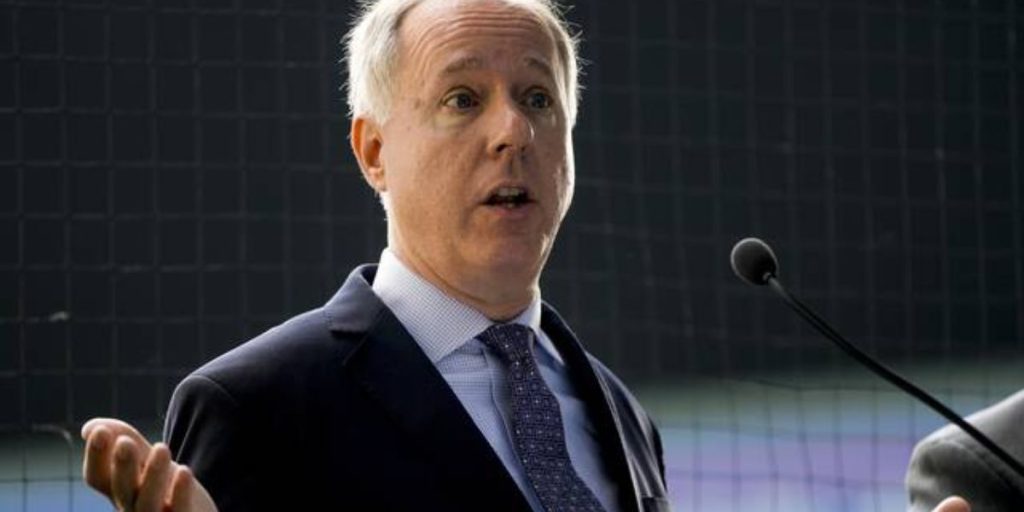Wisconsin’s presidential primary on Tuesday sets the stage for a general election campaign that Democrats consider as unprecedented in state history.
New legislative districts approved this month remove Republican advantages that had given the GOP control of the Wisconsin Assembly despite Democrats winning 14 of the previous 17 statewide elections. Democrats believe they can now compete for a majority, but they also believe that revitalized legislative campaigns will help turn out voters for President Joe Biden and Vice President Kamala Harris this November.
Ben Wikler, the state Democratic Party chairman, refers to the concept as “reverse coattails,” a play on the conventional notion that down-ballot politicians are carried by the top of the ticket.
“It drives up turnout among people who had been unlikely to vote in a way that can directly affect the number of votes we get for Biden-Harris,” he told CNN. “It’s why, I think, there are consequences far beyond the state Legislature of having the new state legislative maps drawn.”
Wikler’s notion is too early to put to the test. However, both parties anticipate the autumn rematch between Biden and former Republican President Donald Trump will be decided on the margins in several of the most contested states, including Wisconsin, which shifted narrowly from Trump to Biden four years ago.

Republican Assembly Speaker Robin Vos, whose job it is to recruit and elect GOP candidates to keep the party’s majority in the Statehouse, disputed the Democratic premise.
“Absolutely not,” replied Vos, the state’s longest-serving speaker. “Everybody who goes to vote is going to be voting on the presidential race because that’s where all the oxygen is going to be.”
The Democrats say that neighborhoods in small towns, suburbs, and rural areas that were formerly part of GOP-heavy legislative districts will now receive increased personal attention. Previously, Democrats’ sole hope was to avoid veto-proof GOP majorities, therefore those districts were deemed unimportant. They will now recruit more campaign personnel and volunteers to increase turnout.
Wisconsin is also one of a half-dozen competitive states where Democrats are defending Senate seats to keep their 51-49 majority. Sen. Tammy Baldwin, seeking a third term, is expected to face rich businessman Eric Hovde, who has only nominal Republican opposition in the Aug. 13 primary.
Baldwin acknowledges that she could benefit from “reverse coattails” in legislative campaigns. In the past, districts “were so gerrymandered, which meant that there were whole swaths of Wisconsin where there weren’t competitive races,” she told me.
“I think this is going to be a very interesting year because I think we’re going to have many more contested races, and fair districts mean people’s voices and votes will be heard,” she said during a recent visit to southern Wisconsin.
Consider Weston, located in northern Wisconsin’s expansive Marathon County. Until last month, the tract of homes and lakes was divided into an overwhelmingly rural, Republican-performing Assembly district, separated from the Democratic-performing city of Wausau, just 7 miles northeast.
According to Bill Conway, chairman of the county’s Democratic Party, the community of approximately 14,000 is now likely to see increased campaign activity as part of the new 85th Assembly District.
“We’re going to have boots on the ground, looking for progressive-minded voters who have been inactive,” she said. “And anyone that I turn out to vote for the Assembly race is also going to vote for Joe Biden.”
Approximately half of the Assembly’s 99 seats are still considered pretty safe Republican bets. Democrats, who currently hold 35 seats, are better positioned in 15 additional districts. Some of the districts are on the edges of the Minnesota Twin Cities metro area in northwest Wisconsin, as well as in the northeastern area of Eau Claire, both of which lean Democratic. Others are in the vote-rich Fox River Valley, including Green Bay, where Trump will headline a rally on Tuesday.
Even if Democrats do not win a majority in the Assembly, Wikler believes that more vigorous canvassing for legislative candidates will help find people willing to vote Democratic in tough top-of-the-ticket races.
Four of Wisconsin’s last six presidential elections, including 2016 and 2020, were decided by fewer than 30,000 votes. Democrat Tony Evers defeated Republican incumbent Scott Walker for governor in 2018 by 29,227 votes. In 2022, Democrat Mandela Barnes was 26,255 votes short of defeating Republican Senator Ron Johnson.
“We’ve got this multiplicity of races going on so the number of people trying to organize here will be higher than almost anyone anywhere in America,” he added. “Their votes could tip the House majority, one of the most competitive Senate races in the country, and be the tipping point in the presidential election.”
Vos has stated that Republicans can win under the new alignment, claiming they have better candidates and a better message.
He agreed that enhanced face-to-face campaigning would benefit Statehouse candidates more than television commercials. However, Vos expects voters to turn out for the top of the ticket rather than the bottom.
“Their base is going to be motivated by hatred of Donald Trump,” Vos went on to say. “Their base is not going to be motivated because you have two candidates running for the Legislature in Stoughton.”